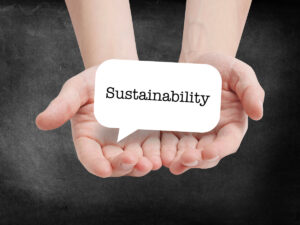When Stewart Brand speaks, people listen. “Who is Stewart Brand?” you ask. He is a visionary, a futurist, a scientist, and an environmentalist. However, some environmentalists are now questioning Brand’s ideas according to John Tierney writing in the New York Times [“An Early Environmentalist, Embracing ‘New Heresies,'” 27 February 2007]. What could make them turn on Brand? The answer is that he has embraced nuclear power, urbanization, and genetically-altered foods. Tierney writes:
“He expects that environmentalists will soon share his affection for nuclear power. They’ll lose their fear of population growth and start appreciating sprawling megacities. They’ll stop worrying about ‘frankenfoods’ and embrace genetic engineering. He predicts that all this will happen in the next decade, which sounds rather improbable — or at least it would if anyone else had made the prediction. But when it comes to anticipating the zeitgeist, never underestimate Stewart Brand.”
Brand is not your typical scientist — or typical futurist — or typical environmentalist. He lives on a tugboat in Sausalito, CA, which enjoys an “artsy” reputation, even in Marin County, and is one of that city’s most notable residents. Brand, now 68, has always been a man ahead of his times. In 1968, he created The Whole Earth Catalog, for example, hoping to enable people to find virtually any sort of information useful to themselves. He is a strong believer in connectivity. He’s convinced that when humans voluntarily connect with one another they can develop new, positive and sustainable cultures and technologies for themselves. He was preaching this before the advent of the Internet. Brand later co-founded the online community The Whole Earth ‘Lectronic Link (The WELL) with Larry Brilliant, director of Google.org [see my earlier post on this subject]. According to Tierney, Brand “divides environmentalists into romantics and scientists, the two cultures he’s been straddling and blending since the 1960s.” It is because he has a proven track record and undeniable credentials that Brand’s latest claims are having such impact. Tierney writes:
“He is now promoting environmental heresies, as he called them in Technology Review. He sees genetic engineering as a tool for environmental protection: crops designed to grow on less land with less pesticide; new microbes that protect ecosystems against invasive species, produce new fuels and maybe sequester carbon. He thinks the fears of genetically engineered bugs causing disaster are as overstated as the counterculture’s fears of computers turning into Big Brother. ‘Starting in the 1960s, hackers turned computers from organizational control machines into individual freedom machines,’ he told Conservation magazine last year. ‘Where are the green biotech hackers?’ He’s also looking for green nuclear engineers, and says he feels guilty that he and his fellow environmentalists created so much fear of nuclear power. Alternative energy and conservation are fine steps to reduce carbon emissions, he says, but now nuclear power is a proven technology working on a scale to make a serious difference. ‘There were legitimate reasons to worry about nuclear power, but now that we know about the threat of climate change, we have to put the risks in perspective,’ he says. ‘Sure, nuclear waste is a problem, but the great thing about it is you know where it is and you can guard it. The bad thing about coal waste is that you don’t know where it is and you don’t know what it’s doing. The carbon dioxide is in everybody’s atmosphere.’ Mr. Brand predicts that his heresies will become accepted in the next decade as the scientific minority in the environmental movement persuades the romantic majority. He still considers himself a member of both factions … but he’s been shifting toward the minority.”
If Brand is correct, and I have no reason to doubt him, then we need to start thinking about new nuclear safeguards right now. Enterra Solutions has been working with the nuclear industry to figure out how rule set automation can make constructing and operating nuclear plants safer and more efficient. What attracts me most to Brand’s thinking is his optimism. It stems, according to Tierney, from a famous bet:
“Mr. Brand is the first to admit his own futurism isn’t always prescient. In 1969, he was so worried by population growth that he organized the Hunger Show, a weeklong fast in a parking lot to dramatize the coming global famine predicted by Paul Ehrlich, one of his mentors at Stanford. The famine never arrived, and Professor Ehrlich’s theories of the coming ‘age of scarcity’ were subsequently challenged by the economist Julian Sinon, who bet Mr. Ehrlich that the prices of natural resources would fall during the 1980s despite the growth in population. The prices fell, just as predicted by Professor Simon’s cornucopian theories. Professor Ehrlich dismissed Professor Simon’s victory as a fluke, but Mr. Brand saw something his mentor didn’t. He considered the bet a useful lesson about the adaptability of humans — and the dangers of apocalyptic thinking. ‘It is one of the great revelatory bets,’ he now says. ‘Any time that people are forced to acknowledge publicly that they’re wrong, it’s really good for the commonweal. I love to be busted for apocalyptic proclamations that turned out to be 180 degrees wrong. In 1973 I thought the energy crisis was so intolerable that we’d have police on the streets by Christmas. The times I’ve been wrong is when I assume there’s a brittleness in a complex system that turns out to be way more resilient than I thought.’ He now looks at the rapidly growing megacities of the third world not as a crisis but as good news: as villagers move to town, they find new opportunities and leave behind farms that can revert to forests and nature preserves. Instead of worrying about population growth, he’s afraid birth rates are declining too quickly, leaving future societies with a shortage of young people. Old-fashioned rural simplicity still has great appeal for romantic environmentalists. But when the romantics who disdain frankenfoods choose locally grown heirloom plants and livestock, they’re benefiting from technological advances made by past plant and animal breeders. Are the risks of genetically engineered breeds of wheat or cloned animals so great, or do they just ruin the romance? Mr. Brand would rather take a few risks. ‘I get bored easily — on purpose,’ he said, recalling advice from the co-discoverer of DNA’s double helix. ‘Jim Watson said he looks for young scientists with low thresholds of boredom, because otherwise you get researchers who just keep on gilding their own lilies. You have to keep on trying new things.’ That’s a good strategy, whether you’re trying to build a sustainable career or a sustainable civilization. Ultimately, there’s no safety in clinging to a romanticized past or trying to plan a risk-free future. You have to keep looking for better tools and learning from mistakes. You have to keep on hacking.”
Risk taking is important for innovation. Brand’s critics, however, would note that taking risks with the environment has more severe consequences than experiments in a laboratory. Brand, I suspect, would counter with the argument that we are at a tipping point where “no action” is worse than “some action” — even if that action may be risky. Nuclear power comes with known risks and known benefits. Brand believes the benefits far outweigh the risks. Convincing his colleagues that he is right may be his biggest challenge.




